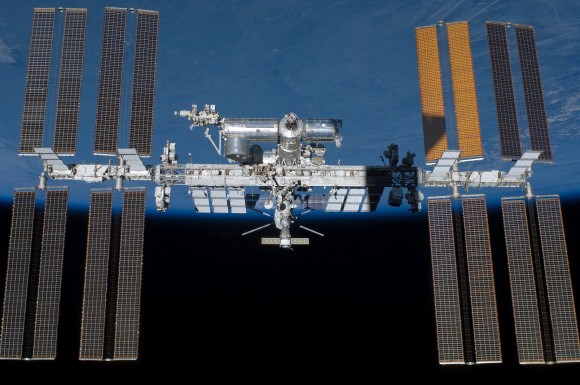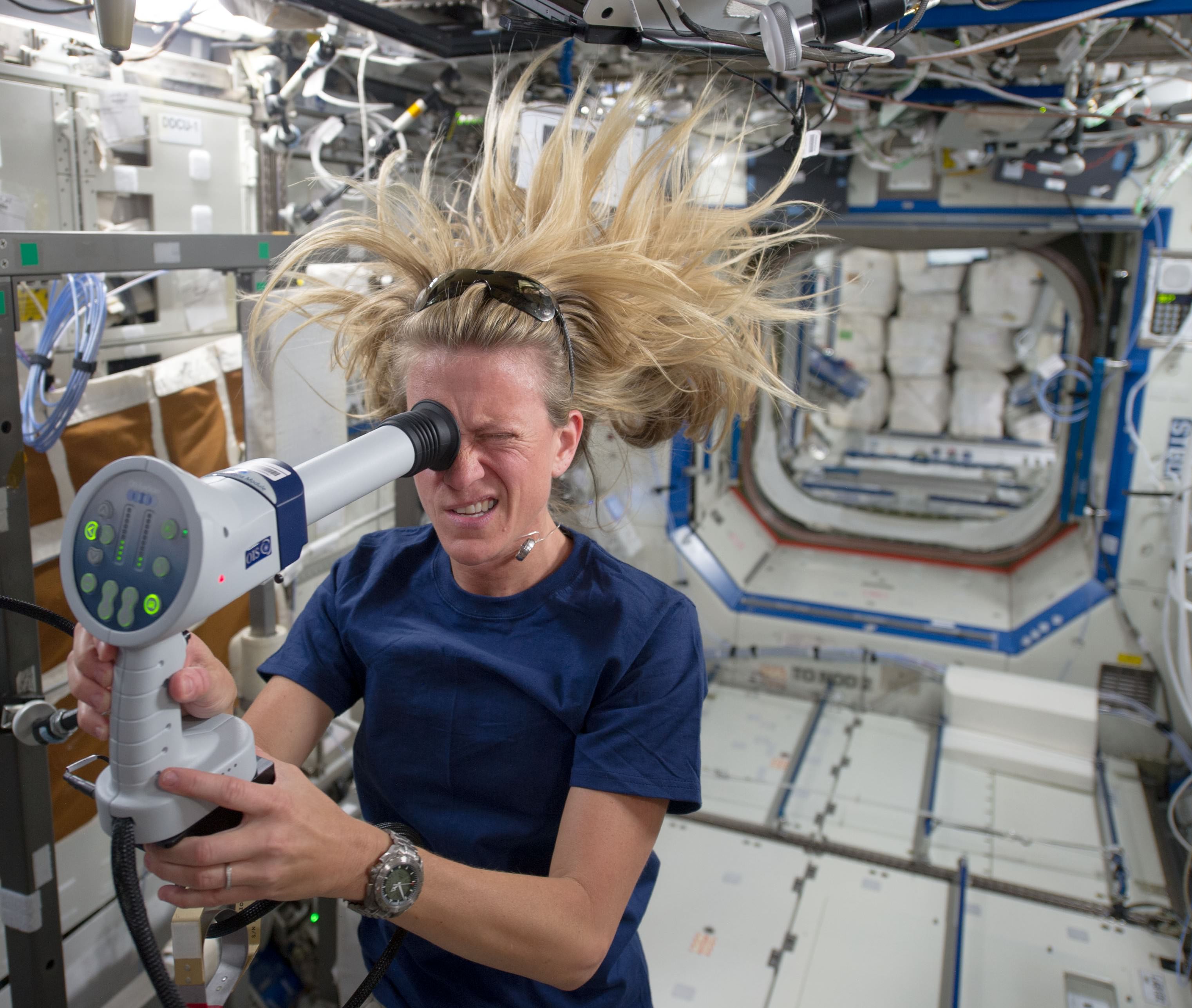How does microgravity affect your health? One of the chief concerns of NASA astronauts these days is changes to eyesight. Some people come back from long-duration stays in space with what appears to be permanent changes, such as requiring glasses when previously they did not.
And the numbers are interesting. A few months after NASA told Universe Today that 20% of astronauts may face this problem, a new study points out that 21 U.S. astronauts that have flown on the International Space Station for long flights (which tend to be five to six months) face visual problems.
These include “hyperopic shift, scotoma and choroidal folds to cotton wool spots, optic nerve sheath distension, globe flattening and edema of the optic nerve,” states the University of Houston, which is collaborating with NASA on a long-term study of astronauts while they’re in orbit.

NASA is flying an instrument on board the International Space Station that does optical coherence tomography, which acts like a microscope on the eye. The technology looks at things such as pressure in the eye and changes in the optic nerve and retinal structures.
The collaboration with the University of Houston recently won Heidelberg Engineering’s annual 2014 Xtreme Research Award. In the long term, the researchers involved are hoping to figure out what changes to make for long-duration missions. One example could be changing carbon dioxide levels on the station, if that is found to play a role.
Long-term health considerations will be one thing examined closely when an astronaut and a cosmonaut spend a year on the International Space Station in 2015, with their milestone bringing them in a small group of people who have spent a year or more consecutively in space.
Source: University of Houston

